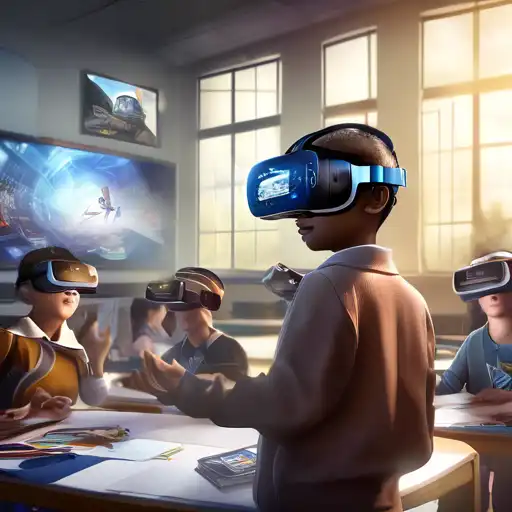Introduction to Virtual Reality in Education
Virtual Reality (VR) is revolutionizing the educational landscape, offering immersive learning experiences that were once unimaginable. This technology transports students to virtual worlds, making learning more engaging, interactive, and effective. As we delve into the potential of VR for education, it's clear that we're standing on the brink of a new era in teaching and learning.
The Benefits of Virtual Reality for Students
VR in education offers numerous benefits, including enhanced engagement, improved retention rates, and the ability to simulate real-world scenarios. Students can explore historical events, dive into the human bloodstream, or even travel to outer space, all from the safety of their classroom. This hands-on approach to learning fosters a deeper understanding of complex subjects.
Engagement and Motivation
One of the key advantages of VR is its ability to captivate students' attention. Traditional learning methods often struggle to maintain engagement, but VR's immersive nature ensures that students are not just passive recipients of information but active participants in their learning journey.
Accessibility and Inclusivity
VR also has the potential to make education more accessible. Students with physical disabilities or those in remote locations can experience field trips and hands-on learning activities that would otherwise be inaccessible to them.
Implementing VR in the Classroom
Integrating VR into educational settings requires careful planning and consideration. Schools and institutions must assess their technological infrastructure, train educators, and select appropriate VR content that aligns with their curriculum.
Choosing the Right VR Tools
There are various VR platforms and tools available, each with its own set of features and educational applications. It's crucial for educators to choose solutions that best meet their students' needs and learning objectives.
Overcoming Challenges
While VR offers exciting possibilities, there are challenges to its widespread adoption, including cost, technical requirements, and the need for quality educational content. Addressing these issues is essential for maximizing the potential of VR in education.
The Future of VR in Education
As technology continues to evolve, the role of VR in education is expected to grow. Future advancements may include more personalized learning experiences, greater collaboration opportunities, and the integration of artificial intelligence to further enhance the learning process.
Virtual Reality is not just a fleeting trend but a transformative tool that is reshaping the way we think about education. By embracing VR, educators can provide students with unparalleled learning experiences that prepare them for the challenges of the future.
For more insights into innovative learning technologies, explore our Education Technology section.
